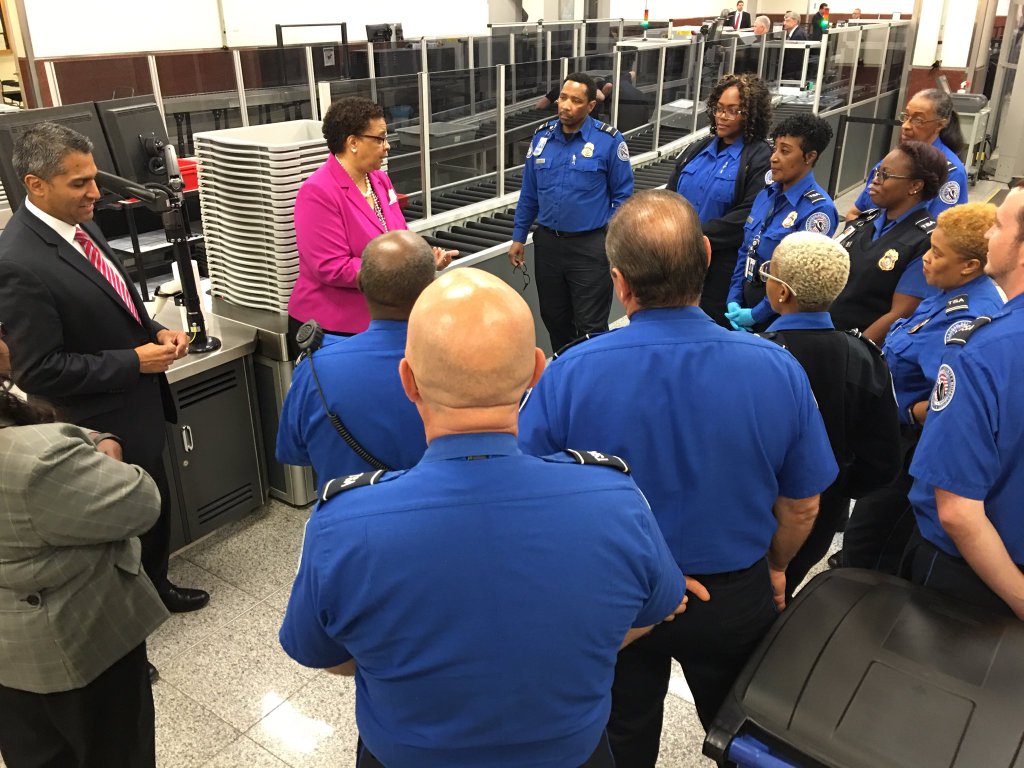
The peak summer travel period is just around the corner and with it comes the usual big lines at TSA airport security checkpoints across the country. But this year, those lines could be even longer than normal – and it’s not just down to a predicted record-breaking year for air travel.
There are plans by the Trump Administration to divert some $230 million from the Transport Security Administration’s budget in order to help fund the massive DHS operations taking place at the Southern border with Mexico. According to the New York Times, officials from Customs and Border Protection detained over 109,000 migrants at the border in April – the highest number since 2007.
The Department for Homeland Security has already pulled some federal agents from airports to help out with the huge influx of migrants (and detentions) but so far the TSA which conducts passenger screening has been protected – and no plans currently exist to use these federal officers.

Instead, agents from a number of agencies including the Air Marshall service have volunteered to help out with processing migrants and providing humanitarian support. They number in the hundreds – a mere drop in the ocean of federal agents deployed at airports and other border crossings.
But plans being mulled by the Trump Administration could load extra pressure on the TSA at just the time that it really doesn’t need it. In a row with Congress to secure a multi-billion dollar tranche of funding for operations at the Southern border, Trump has suggested siphoning off $230 million from the TSA’s budget as part of a $1.1 billion contingency fund.
Around $50 million of that would have been used to buy advanced new screening equipment, while a further $64 million had originally been set aside for a TSA workers compensation fund.
Critics of the idea are understandably up in arms and are warning that, if approved, the plan could not only directly lead to longer wait times but also put the travelling public in danger.

“Moving $232 million from TSA’s already-stretched budget sets the stage for reduced checkpoints and long security lines,” warns charismatic flight attendant leader Sara Nelson.
“Reduced staffing at checkpoints isn’t just an inconvenience–when TSA is stretched thin, it increases the risk of a serious security breach. As the busy summer travel begins, it couldn’t be a worse time undermine important safety programs and endanger the safety, security and comfort of the travelling public,” she continues.
In fact, Nelson thinks this is all part of a wider plan to privatize the TSA by deliberately creating a scenario in which the agency can’t operate effectively.
At present, the TSA must provide passenger screening services at the majority of airports but the so-called ‘Screening Partnership Program’ allows airports to replace the TSA with a private contractor. As it stands, there are just 22 airports that have won approval from DHS to use private security screeners, although notably both San Francisco and Orlando International Airport’s are included in that list.
Airport security was, of course, taken over by the Department of Homeland Security after 9/11 but the TSA has had a patchy track record in proving its effectiveness – failing its own internal testing protocols time and time again. You can’t help but feel that any cuts to the TSA’s budget will make matters even worse.
“The proposed cuts will be felt this summer and in years to come,” Nelson cautions. Plans to buy new screening equipment that makes the process a lot more efficient will likely to be out on the back burner. From a flight attendant point of view, Nelson knows who will feel the brunt of any delays – her colleagues at airlines across the United States.
Mateusz Maszczynski honed his skills as an international flight attendant at the most prominent airline in the Middle East and has been flying ever since... most recently for a well known European airline. Matt is passionate about the aviation industry and has become an expert in passenger experience and human-centric stories. Always keeping an ear close to the ground, Matt's industry insights, analysis and news coverage is frequently relied upon by some of the biggest names in journalism.







